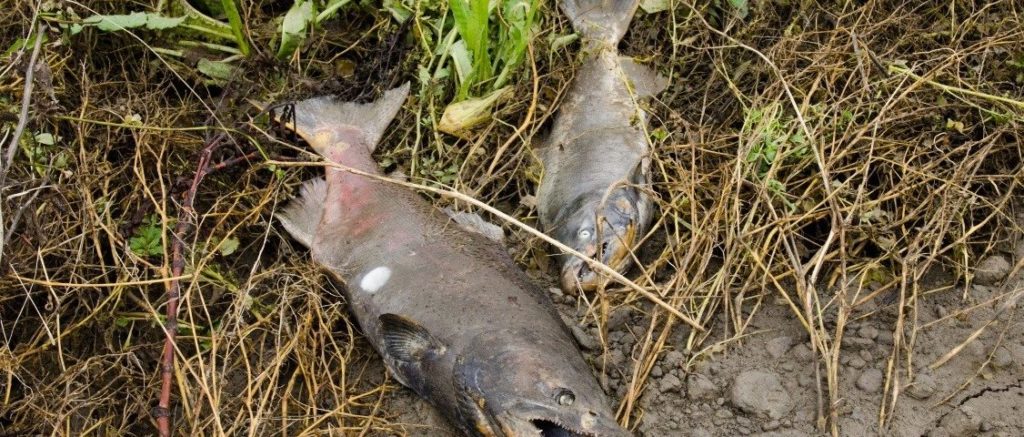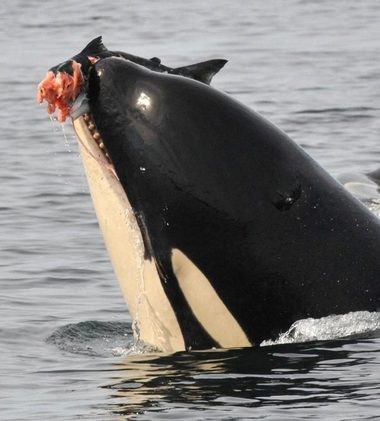Why GSSA works to restore California’s Central Valley salmon
To members of the Golden State Salmon Association, salmon are what bind us to the natural world, a bond we greatly identify with and deeply appreciate. Salmon is a very special natural food that tastes great and is very good for you. For many of us, salmon provides the income we use to keep a roof over our family’s head. In addition, because it is widely appreciated as a food, salmon is a great social connector. Sharing salmon steaks or fillets with family and neighbors is as old a custom on the west coast as human residence here. Giving and receiving salmon as food is deeply appreciated custom amongst coastal and inland river people, native and non-native alike.
For many of us, pursuing salmon for food is how we learned about the Pacific Ocean and the rivers we live next to. This taught us about the great symphony of life right off our shore and in our rivers. We are humbled and strive to be part of that incredible orchestra.
Some say the west coast lacks seasons. Salmon fishermen and women would beg to differ. We learned that spring is the time when juvenile salmon move from inland rivers and streams of their birth to the sea. The timing coincides, quite on purpose, with the onset of spring.
As California’s great Central Valley awakens from winter and starts to warm in the spring and early summer, strong northwest winds are generated along the coast. Cooler air over the ocean rushes in to fill the vacuum left by warmer valley air that’s rising. The ocean winds in turn create upwelling in coastal waters where cold, nutrient-laden deep ocean water rises and mixes with surface waters. The longer days with more sunlight spark photosynthesis in ocean plankton which flourish in the newly enriched, nutrient filled water.
All of this works in perfect synchronicity, like a finely crafted Swiss watch, except it’s completely natural. The upwelling feeds the blossoming plankton which in turn feed huge clouds of small shrimplike krill that are eaten by the newly arriving baby salmon.
There’s more to the synchronicity…
Baby salmon born in the fall and winter in Central Valley are poor swimmers when they’re four inches long. They’ve evolved to “hitch a ride” down river, through the Delta and Bay and out to sea on runoff from winter and spring rain runoff and snowmelt. The runoff functions like a conveyor belt carrying the next generation of salmon to start their two years in the ocean right as the ocean is blooming with baby salmon food. When the baby salmon arrive on the blooming ocean, they join adult salmon also gorging on the feast.
Enter man. Maybe there’s a hunter/gather gene in some of us hardwired in our brains. Some of us have responded to the incredible explosion of life and food off our coast by going to sea and bringing home some of the adult salmon, especially if we can find some feeding on krill. Krill seems a common denominator food enjoyed by most forms of marine life. In addition to salmon, other marine animals, including baleen whales, (especially blues), humpbacks and grays, love it too. Sea lions flock to krill blooms to feed on the salmon, snapper, and other fish feeding on the krill. Forage fish including anchovy and herring gorge on krill.
When fishermen and women enter krill filled waters in pursuit of salmon, we have much in common with all the other life forms out there. We’re all there to get food provided by an incredibly bountiful coast we’re lucky enough to live near.
We learn to master the ocean elements the marine species understand intuitively. Some of us learn to master the freshwater rivers also native to the salmon. Although indirect, this acquired mastery is another reason we hold salmon in such high regard. They are the catalyst that gets us into the middle of the natural world. We learn to understand and predict wind and currents. We become experts at weather forecasts and exactly what kind of ocean conditions we’ll deal with in the course of a day’s fishing. We have a really good idea of how late we can stay and how far we can go in order to get back safely. Others learn to master the swift river current, eddies and rapids, reading the water depth by clues on the surface.
In short, we meld into the natural world all around us in pursuit of salmon. Even when we don’t catch fish, the experience of being so close to the natural world is healing and rewarding by itself. The pursuit of salmon brings us to this place.
After adult salmon return and spawn in the freshwater rivers of their birth, they die.

Their carcasses contribute tons of nutrients to the inland freshwaters and adjacent landscapes. They provide food for animals including bears, raccoons, mink, eagles and others which transfer and deposit the nutrients over many miles. In essence, salmon are natural transport vehicles moving the nutrient wealth of the Pacific Ocean into inland waterways and landscapes.
The story of coastal California north of Morro Bay is a tale of redwood logging and fishing. After the redwoods were logged out, the towns, ports, harbors and villages remained all along the California coast to service the independent fishermen who made a living catching and selling salmon. Salmon fishing continues to support places like Moss Landing, Bodega Bay, Pt. Arena, Ft. Bragg, Eureka, Crescent City, and many more. Generations of fishermen and boat builders thrived for years on the demand for ocean caught salmon. Support businesses from grocery stores to tackle shops to boat dealerships popped up to support the economically valuable commercial and sport salmon fishery. Today many of these towns still rely on salmon fishing for a large part of their economic activity.
For salmon fishermen, catching and taking home a salmon is like finding a giant gold nugget. You’ve acquired a treasure when you get a fish.
Californians flock to the coast and to inland rivers every summer to fish salmon from all corners of the state and beyond. In the late summer and early fall they flock to the Sacramento River and its tributaries to get a shot at catching a salmon.
In recent years Central Valley salmon have provided over $2 billion in economic activity to communities in California and Oregon. They provide 23,000 jobs in California and half that again in Oregon.


Salmon are a critical food source for other marine species including orcas, sea lions, harbor seals, and sharks. All have evolved to pursue the nutritious nuggets salmon are. We see all of them fishing where we fish, sharing the same treasured species we seek.
Salmon supported native people in California long before white settlers discovered them. To this day native people still rely on this food source as ancient as their existence and culture. Salmon remain central to their way of life, religion, and orientation in the world. With other natural wild foods to choose from, salmon always held a special and very high place for native people and many of us see why.
Become a Member
GSSA is grateful for a diverse membership that includes informed consumers, commercial fishermen, commercial fleet professionals, environmentalists, scientists, business owners, and chefs and restaurant owners. Your membership directly supports the critical work of GSSA and reflects your commitment to local salmon.
